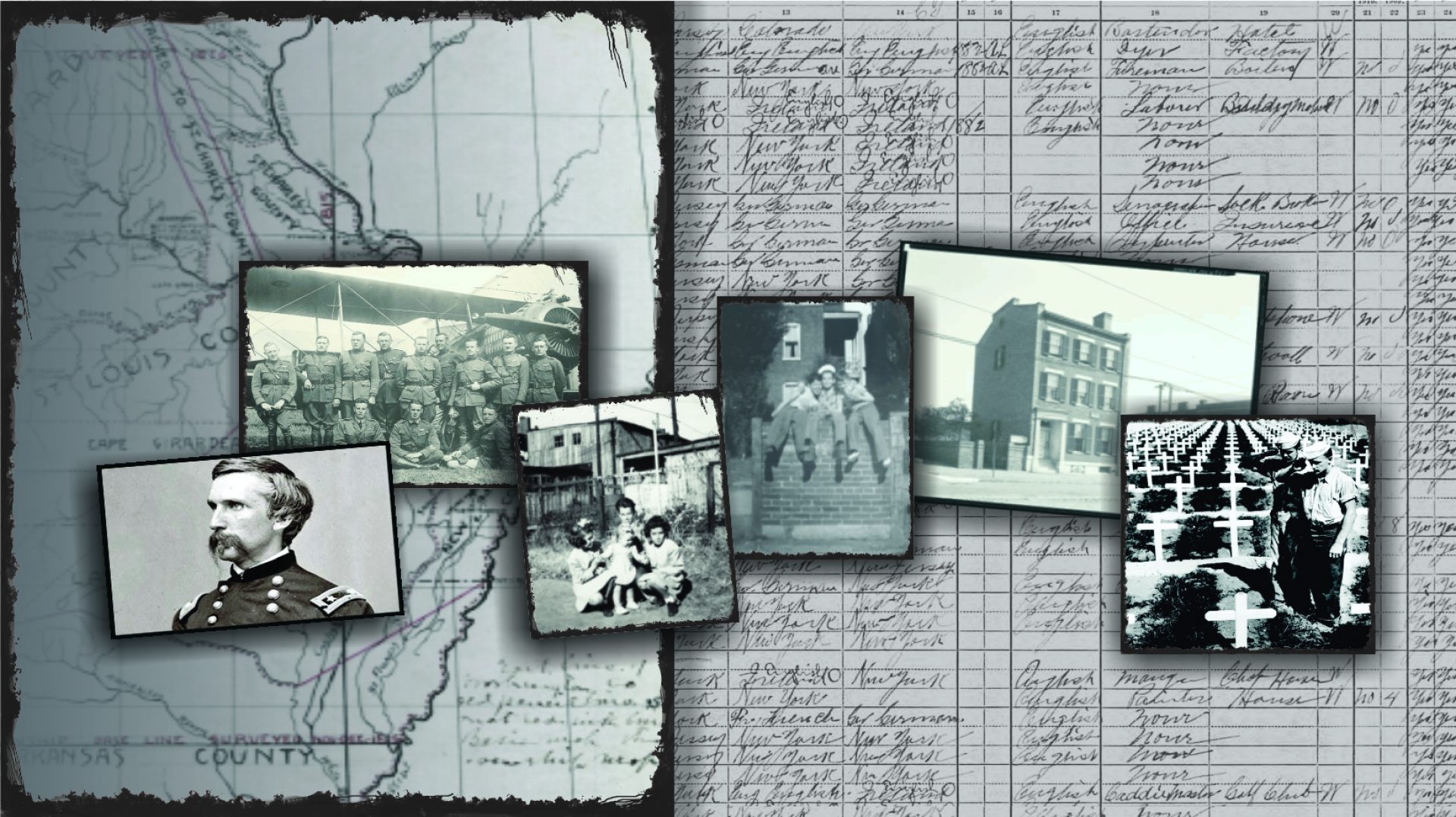To request your veteran’s military service records click here: Request WWII Army military service records
Researching WWII Army Military Service Records
This article explains how to use a wide array of WWII Army military service records, and unit records at the National Archives to document the service history of individual WWII Army soldiers. Because the vast majority of WWII Army official military personnel files (Army O.M.P.F.’s) were lost in the 1973 Archives fire, it may be necessary to gather many of the WWII military service records which are described in this article in order to build a complete picture of your individual WWI Army veteran’s WWII service. Let’s take a closer look at the WWII military service records and unit reports which can be used to trace the steps of your individual WWII Army soldier.
To Request Your Veteran’s Records click here: Research a WWII Veteran
WWII Army Veteran Official Military Personnel Records (Army O.M.P.F.’s)
The 1973 fire at the National Archives destroyed the majority of Army and Air Force military personnel records from the 20th Century. Despite the fire, there are a number of WWII Army O.M.P.F. records that survived the fire in some form. The National Archives estimate that about twenty percent of the WWII Army O.M.P.F. records survived the fire so there is a chance that your WWII Army veteran’s O.M.P.F. may be one of the military service records which has pages that were not lost. Keep in mind that some WWII O.M.P.F. records were partially burned so you may find that even if your WWII Army veteran’s O.M.P.F. record did survive the fire there are only a few fragmentary records left over. It is common to find burn marks as well as water damage on many of the surviving records.

WWII Army Individual Deceased Personnel Files
The I.D.P.F. was created to document the death and burial of individual WWII Army veterans who died or were killed in the service. These files also exist for Korean war veterans who died in the service. Prior to WWII, the death and casualty files were known as ‘Burial Files’. We have a separate video tutorial for the WWI era burial files here: WWI Death Record Files
The WWII casualty files may provide documentation on the WWII Army veteran’s military service and family situation back home as well. It is common to find correspondence from both the War Department and family of the deceased veteran inside of the WWII era I.D.P.F.’s. At times the WWII Army I.D.P.F. can provide in-depth documentation showing exactly how a veteran was killed in action.

WWII Army Veteran Reconstructed Military Service Records
Many Army Veterans whose WWII military service records were lost in the fire have what is referred to as ‘reconstructed military service records’. In most cases, these reconstructed WWII military service records consist of material that was sent to the National Archives after the fire as a way for the WWII Army veteran or the Army veteran’s beneficiaries to verify eligibility for military aid or benefits. Records that are found inside of reconstructed WWII military service records were often sent into the archives many decades after the WWII Army veteran’s service. This example of a reconstructed WWII military service record was sent to the National Archives at some point in the 2000’s.

WWII Army Veteran Medical Service Records
After the war, medical extracts were created from the original medical service records in the WWII Army veteran’s official military personnel file. These medical service record extracts were used for a military survey of both WWII and Korea War military personnel files in the 1950’s. We are fortunate to have these WWII Army medical service records since the originals were almost all completely wiped out several decades later in the 1973 fire. In the 70’s, 80’s and 90’s the National Archives used these WWII Army medical service records (in part) to rebuild the military service history of many Army veterans whose WWII military service records were lost in the fire.
WWII Army Medical service records are organized by serial number so having the military serial of your WWII Army veteran is a must when searching these WWII Army medical service records. The fact that there are no actual names associated with the WWII Army medical service records can also create some frustration for researchers. Some Army serial numbers were actually duplicated and used twice between WWI and the Korean War. It may be necessary to isolate certain elements of your WWII Army veteran’s military service in order to figure out whether the WWII medical service records showing his serial number are indeed his.
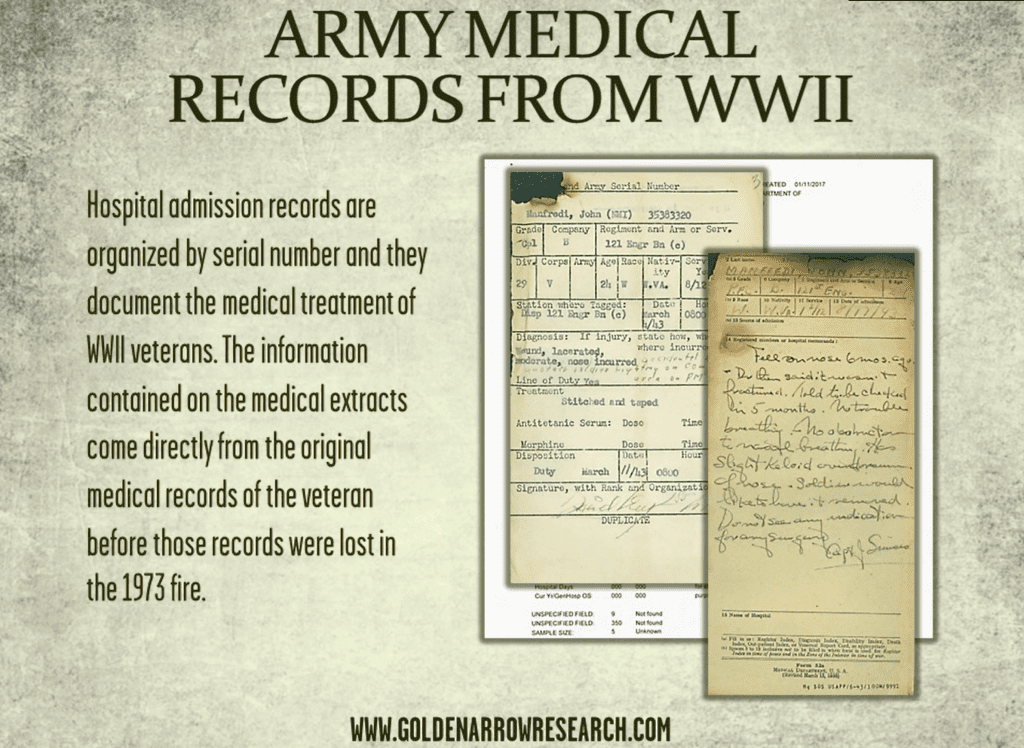
WWII Army Unit Morning Reports
The WWII Army morning reports were created at the company level, written up by company clerks, and then sent to storage with Army records-keeping units. Because the WWII Army morning reports were maintained at the company level, they allow us to follow in the footsteps of individual WWII Army soldiers (who are mentioned in the morning reports by name). The WWII Army morning reports document important details such as combat participation, military duties, promotions, ranks, dates and locations where a veteran was wounded, injured or killed in action, and map coordinates where a WWII Army veteran was stationed on a given date.
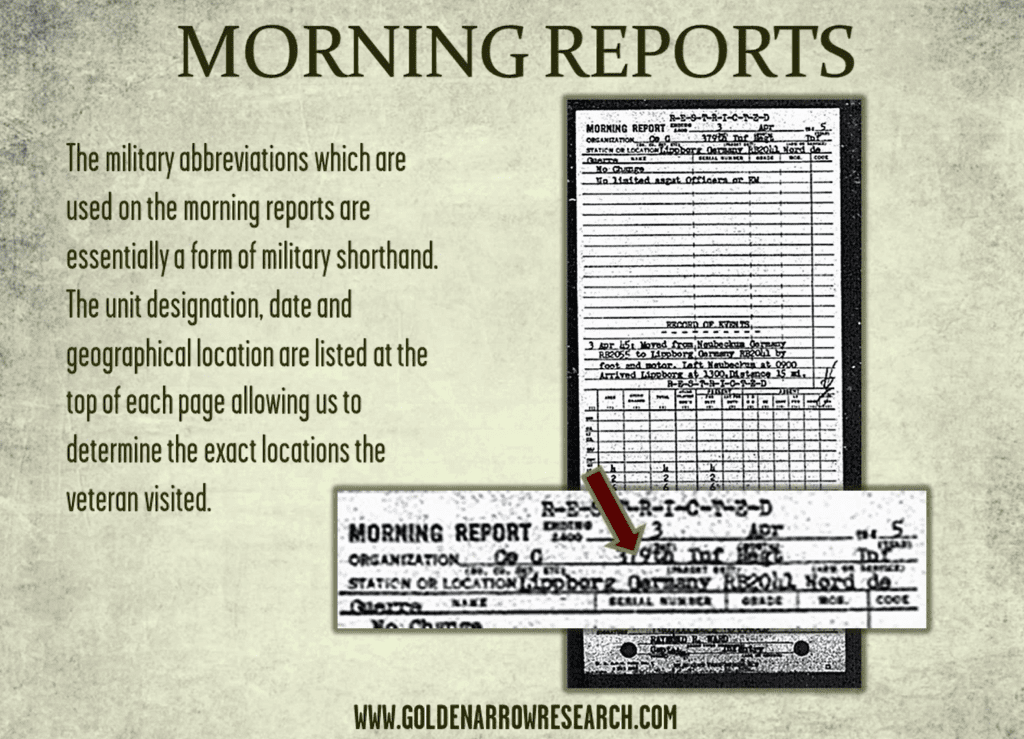
WWII Army morning reports contain vital information on both individual WWII Army Soldiers and the small unit to which they were assigned. The WWII Army morning reports not only allow us to see what happened to the individual WWII Army soldier but also all of the other men around him as well. Few records at the National Archives allow for as much in-depth understanding of the experiences of individual soldiers as WWII Army morning reports. If you want to rebuild the service history of an individual Army veteran you will need to access the morning reports for their Army unit.

WWII Army Unit General Orders
Many WWII Army veterans were awarded medals for heroic actions performed on the battlefield. The army created a permanent copy of the citation for these medals which is known as a ‘general order’. General orders often provide a detailed explanation of what exactly the individual WWII Army did to earn his medals.

WWII Army Air Forces Pilot Logs
Pilot flight logs were created to document flight assignments for WWII pilots, co-pilots, and navigators. Pilot flight logs do not exist for enlisted flight crew members. However, their missions can be reconstructed as well if their assigned pilot can be determined. Pilot flight logs can tell us: The pilot’s unit of assignment, when and how long they were in the air, and the type of aircraft they piloted. This information can be used to pinpoint the exact combat missions flown by individual crew members during WWII.
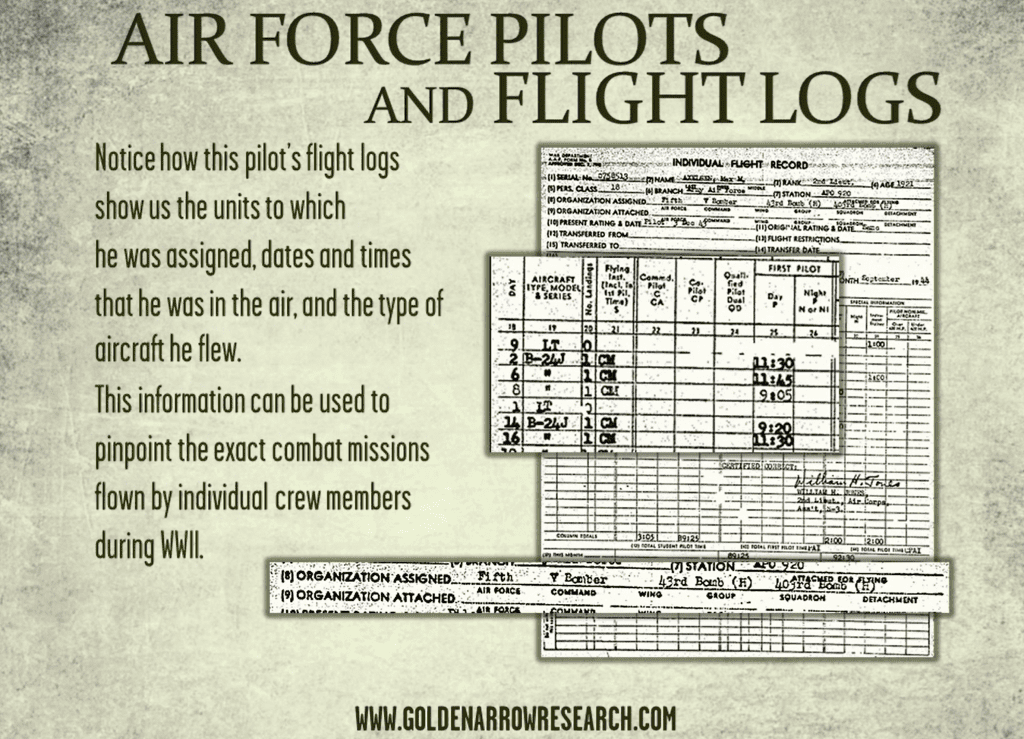
WWII Army After Action Reports
The after-action reports provide a detailed account of the combat actions for the army unit to which a veteran was assigned. After action and unit operations reports normally document combat action at the Division, Regimental, or Battalion level. In many ways, the after-action reports are the final piece of the puzzle. After you have traced your WWII Army veteran’s steps using the previously mentioned records then you will know exactly when he was in various combat zones. Knowing exactly where your WWII Army veteran was stationed and when he was stationed there will allow you to zero in on the correct combat after-action reports for the time he was physically in combat zones.
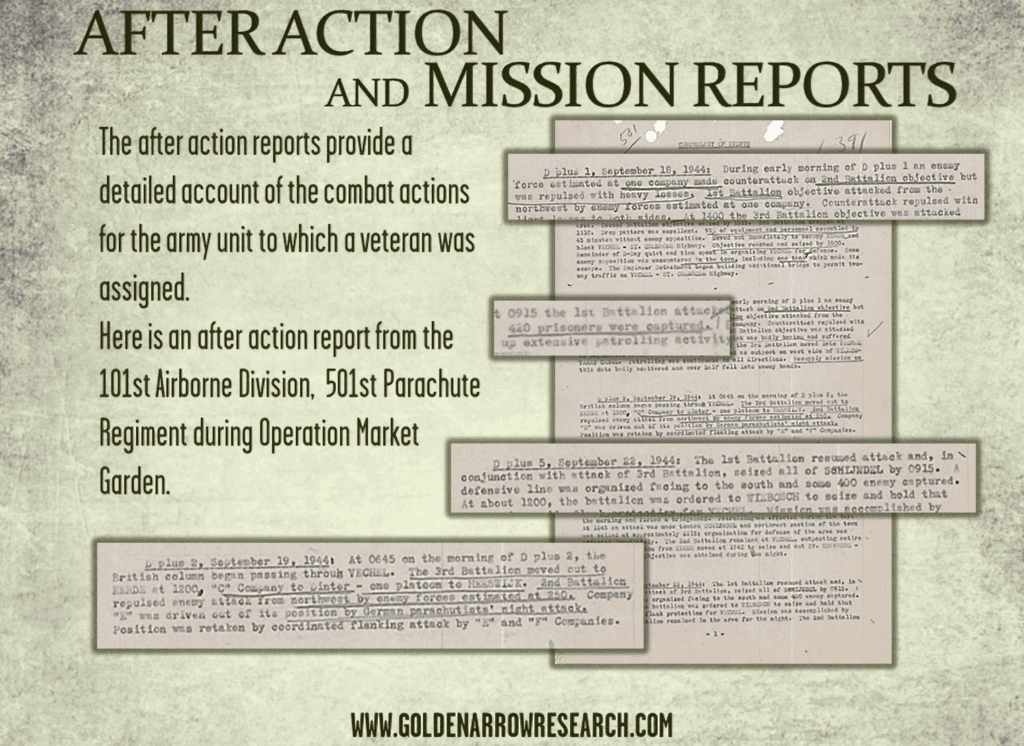
“Every veteran has a unique story. The mission of Golden Arrow Research is to document your individual veteran’s wartime experiences, allowing you to better understand and also preserve the history of their military service. Our expert research team is on-site daily at multiple archival facilities. We use our exclusive research process to trace your individual veteran, showing you where they were and what they did during the war.
Let us help you to tell your veteran’s story.”
Contact us today to start researching your veteran
Whether you need access to military service records or interpretation and analysis of complicated military records/abbreviations we can help! Fill out the form below to discuss our research options.
[contact-form-7 id=”2188″ title=”Military Service Records”]
